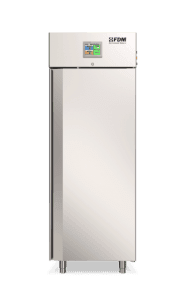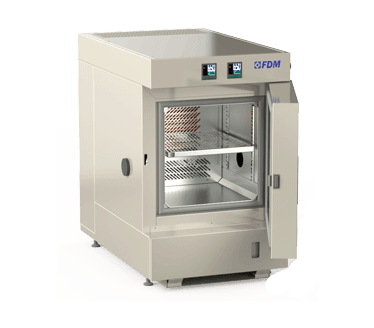
Climatic Food Testing: Standards and Applications
Gli alimenti che riempiono gli scaffali dei nostri supermercati sono in gran parte il risultato di elaborati processi industriali. Il prodotto finito che finisce sulle nostre tavole, però, deve soddisfare diversi requisiti molto severi prima di uscire dalla fabbrica.
With these standards, we mostly refer to the basic HACCP rules (Hazard Analysis and Critical Control Points), a "self-regulating" standard that defines how, in the whole production process of an edible good, the company in question must guarantee its hygiene and consumer safety, through systematic and documentable standard processes.
The FSSC 22000 code, a standard directly connected to ISO 22000, also certifies hygiene and food safety, and is completed by TS 22002-1 for food and TS 22002-12 for the related packaging
The climatic tests for food, such as the aforementioned, concern the product and all the aromas and substances that compose it but also the same packaging that contains them, for which its integrity and contact with the food itself is assessed.
The tests on the packaging also serve to confirm the characteristics of color and resistance in relation heat and light, even long after the sale and hence on the exposure with the various agents.
Stability Testing
The characteristics of food testing are often associated in the same category with products of the cosmetic and pharmaceutical industry.
The reason for this nomenclature is that the temperature to which the specimens are subjected remains constant for a predetermined period of time.
The reason for this nomenclature is that the temperature to which the specimens are subjected remains constant for a predetermined period of time.
The stability test is the alternative to temperature cycles, tests where temperature is programmed, through the controller with which the chamber is equipped, in different automatic cycles with different temperatures.
This type of test is common in the automotive and aerospace applications.
Climatic Testing for Food
Environmental testing generally includes both temperature and humidity control, to simulate the real humidity of the air, but also, in some cases, illumination.
The climatic food testing define its duration (product life cycle) and therefore its expiration date (shelf-life)
The so-called on-going stability tests confirm or deny whether the good in question can maintain its organoleptic properties unaltered even after the expiration date.
Perform
Climate Stress
Discover the new series of Climate Chambers for controlled climate testing
Accelerated Aging Testing
During the accelerated aging test, the temperature is set very high or very low, to check the different reactions to different environmental conditions.
This test is meant to simulate the real aging of the products in their real life cycle.
Industrial times, however, must be much shorter than after-sales ones.
For two main reasons:
- Companies must constantly renew their product range to remain competitive with competitors
- Even if it was only one single product to be tested, both for time and cost reasons, it is not possible for a company to wait two years of testing, to simulate a real situation
The testing temperature will hence be higher than any possible temperature that the products might really face in their life cycle, right in order to replicate, in weeks, what normally should happen in years.
As for the lighting parameter, when we test the consequences of lighting on food, we talk about photostability testing, for simulating day and night conditions.
You cannot find the ideal chamber for your test?
Create your own environment, according to any test requirement
Environmental Chamber for Food Testing
The climatic chambers for stability tests are often provided with a glass door to allow the operator to check the progress of his samples in real time and possibly handle and manipulate them.
The operating temperature is usually 0/70° (in some cases -25/70°)
The volume certainly depends on the type of sample to be analyzed, but since we are talking about food, technicians tend to opt for a small instrument.
The reference controller, given the lack of the requirement to automatically program temperature cycles, will be a stillFACE type programmer.
The FDM Climatic Chamber for food testing
FDM has been manufacturing climatic chambers since 1949, and offers the most suitable solutions for every requirement in the food, cosmetic and pharmaceutical industries, for stability testing and accelerated aging testing.
The volumes are various, from 140 to 2300 liters for this specific field.
Do these ranges and volumes not satisfy your research? Contact us and request a customized quote.
The FDM team can work on any non-standard project, to meet the requirements of any test.
Do you have to take Stability Tests?
Contact us to receive more information about FDM Stability Chambers



